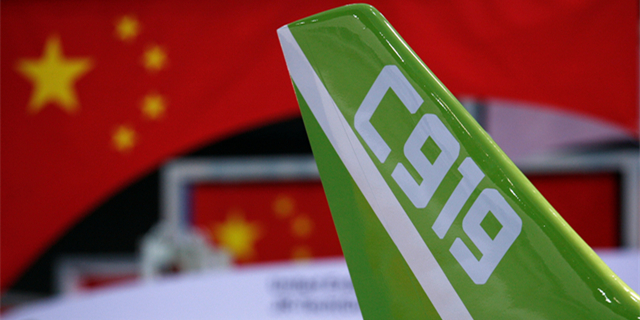The Korean nuclear issue: Past, present, and future – A Chinese perspective
Conclusion
It remains to be seen where the Korean nuclear issue is heading. There are three possibilities:
First possibility: The vicious cycle of U.S. and U.N. sanctions followed by North Korean nuclear and missile tests goes on until reaching a tipping point. For an isolated and relatively independent country such as North Korea, sanctions may exert huge pressure, but the country can hold up and will not give up nuclear development just because of them. As a matter of fact, North Korea started nuclear testing after sanctions started, and it has conducted five tests against the background of intensified sanctions. So it is not hard to see that this situation could make the issue drag on into a spiral of intensified sanctions and continued nuclear testing until Korean nuclear and missile technologies reach a tipping point. At that point, those who oppose North Korea possessing nuclear weapons would be faced with the hard choice of taking extreme action with un- known consequences, or tolerating it.
This pattern is difficult to change because of two factors: First, North Korea is determined to possess nuclear capabilities in order to ensure its own security. This has been its policy choice, and has been increasingly reinforced over recent years. North Korea has perceived external security pressure and has not been successful at acquiring a security guarantee, despite having attended different forms of peace talks. The events in other countries like Libya have also affected Pyongyang's thinking. Secondly, the United States is unwilling to make any compromise and refuses to make a deal with North Korea, and this has become a politically correct view, especially in the military and strategic circles. In the mean- time, the U.S. is also making use of the tension to invest heavily in strategic deployment and military activities in Northeast Asia and, therefore, cannot focus itself on resolving the nuclear issue. Given its political habits, any adjustment in policy toward North Korea would meet strong resistance. Whether President Donald Trump can free himself from the old inertia and find a way out remains to be seen.
In the U.S., there is often talk about the military option. Every time this is seriously considered, the analysis invariably shows that, given the heavily deployed conventional and strategic weaponry across the Peninsula, military action, big or small, would cause huge civilian casualties and results that are hard to control. Keeping the military option on the table also threatens stability and is a source of mistrust among the countries involved. As the situation gets closer to a tipping point, it is all the more important for the U.S. to carefully calculate its moves and for China and the U.S., as well as other countries concerned, to better coordinate on future steps.
Second possibility: The North Korean regime collapses — which is what the U.S. and the South Korea want the most. The U.S. has long taken a stance of non-recognition and hostility toward North Korea, with regime change as its main goal. This was also one of the fundamental principles of President Obama's policy of strategic patience. To a large extent, the persistence of the U.S. in intensifying sanctions while giving no chance for talks had the intention of pushing North Korea to undergo internal changes. In the U.S., contact and dialogue with North Korea are often regarded as helping the regime and hindering changes. That is why North Korea firmly believes that the U.S. will not change its hostile policy and, therefore, that it should take a strong position to resist. The reality is that the Korean economy has already passed through its most difficult time. Kim Jong- un, after taking up the mantle as North Korea's top leader, has stabilized the domestic situation. Though North Korea's domestic policy and behavior have caused wide resentment, the expectation of regime collapse as a solution to the Korean nuclear issue may not be realistic in the short term.
Third possibility: Talks and serious negotiations restart, which may ease or even resolve the nu- clear issue. Admittedly, this is harder now as mistrust between the U.S. and North Korea has grown deeper over the years, and the ups, downs, and many setbacks throughout multilateral negotiations have undermined the parties' confidence in dialogue. But past experience shows the obvious benefits of talking: First, talks helped stabilize the situation and created conditions for addressing mutual concerns. Second, talking opened the way to reaching various agreements. The September 19 Joint Statement, February 13 Joint Document, and October 3 Joint Document, which were achieved through the Six-Party Talks, represent the maximum consensus among all parties and together provide a roadmap for a political solution to the Korean nuclear issue. The disruption of the talks was due to a failure to implement the agreements, and the nuclear issue has escalated in the absence of talks. It should be noted that, after years of escalation, the ground has shifted and the basis for negotiation has changed significantly since 2003. If talks are resumed, whether all parties can accept such a reality and whether they can restart negotiations without preconditions remains an open question. In other words if some parties assume nothing has happened or try to return to the past without considering changes, it will be hard for the new talks to succeed. Currently, one realistic starting point may be a "double suspension."
As Chinese Foreign Minister Wang Yi explained at a press conference on March 8, 2017:
To defuse the looming crisis on the Peninsula, China proposes that, as a first step, the DPRK suspend its missile and nuclear activities in exchange for a halting of large- scale U.S.-ROK exercises. This "double suspension" approach can help us break out of the security dilemma and bring the par- ties back to the table. Then we can follow the dual-track approach of denuclearizing the Peninsula on the one hand and establishing a peace mechanism on the other. Only by addressing the parties' concerns in a synchronized and reciprocal manner can we find a fundamental solution to lasting peace and stability on the Peninsula.
In other words, China calls for parallel steps to address nuclear and security concerns.
At the most recent China-U.S. summit in Florida and the first round of the China-U.S. Diplomatic and Security Dialogue that was held on the sidelines in April 2017, the two sides had an in-depth exchange of views on the Korean nuclear issue. China reiterated that it is committed to denuclearization, peace, and stability on the Korean Peninsula, as well as a settlement through dialogue and consultation. China also said that it would continue to fully implement the U.N. Security Council resolutions on North Korea. China further explained to the U.S. side its proposals of "double suspension" and a "dual-track approach of denuclearizing the Peninsula," stressing its hope to achieve a breakthrough for resuming talks. China also reiterated its opposition to the deployment of the THAAD anti-missile system. During the summit, the two sides confirmed the denuclearization of the Korean Peninsula as a common goal, and agreed to keep close communication and coordination on the issue. This gives hope for a better understanding between China, the U.S., and the other parties concerned, and a better future for inclusive security in the Northeast Asia region.
To conclude, China's interest lies in ensuring a nuclear-free Korean Peninsula, and preventing the disruption of peace and security in Northeast Asia and the whole of the Asia Pacific. China' responsibility is to play a proactive role in achieving the above objectives through peaceful means, and to help bring about a peace accord, thus creating lasting peace and enabling greater cooperation in the region. China should also be firm in preventing any major turbulence or even conflict on the Peninsula. Only through dialogue can mutual security be achieved. In this way, we may help wrestle the Korean Peninsula out of its current vicious cycle and prevent Northeast Asia from turning into a "Dark Forest."
This artice was first published by the John L. Thornton China Center of The Brookings Institute, and China Daily website now republishes it with authorization.
















